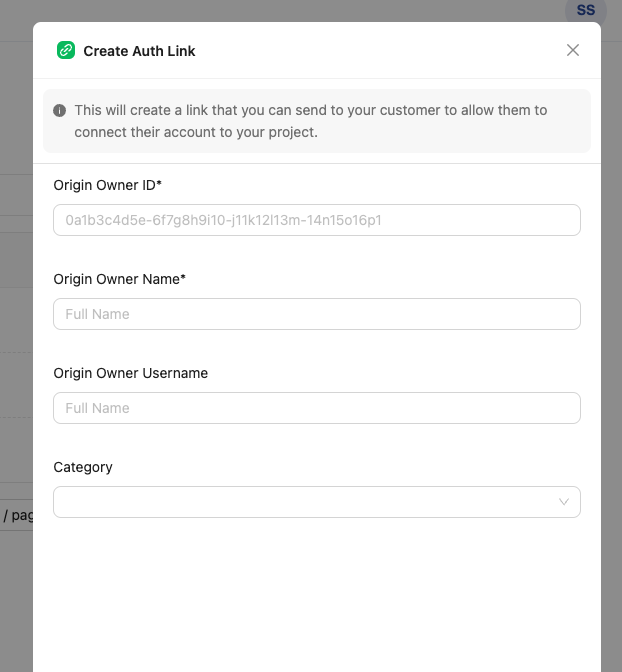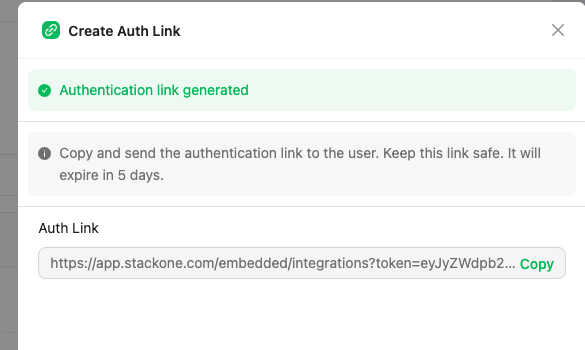Overview
Auth Links allow you to deliver a secure URL to your end users that integrates them seamlessly, giving them a secure, in-browser experience without requiring you to embed the StackOne Integration Hub in your web app.How to generate a link
An Auth Link can be generated directly from the StackOne dashboard. Here’s how:
1
Navigate to Accounts
Log in to the StackOne dashboard and select Accounts from the left menu.
2
Press the 🔗 Create Auth Link button

3
Fill in the required fields
- Origin owner ID - This should be the customer identifier you use in your own system(s) (most likely, a UUID or integer)
- Origin owner name - This is the Customer Name in your own system(s)
- Origin username (optional) - Your customers’ username (eg: an email address) that will connect or be responsible for the connection
- Category (optional) - If you have enabled integrations across multiple categories - you can filter the list of connectors displayed. Make sure that the information you enter matches your system precisely.

4
Copy and send the link to your customer

Note: This link expires after 5 days.
Generating the link programmatically
To support a more scalable solution, you can programmatically generate links for your customers. Call the Create Connect Session Endpoint and theauth_link_url property in the response contains the link for your customer.
Make sure to specify an appropriate value for
expires_in (in seconds) in order to leave enough time for your customer to complete the connection process.
(eg. 5 days is 432000, 7 days is 604800)What your customer sees
When the user navigates to the Auth Link, they will see the Integrations Hub with a list of all integrations enabled on your project. The user can then select and connect to the provider they need.
Verifying the connection
After the user has and connected an integration successfully, StackOne will fire aaccount.created webhook event containing the Account ID (which is required to make a unified API request). The linked account will also be displayed in the Accounts page and it will also be visible via the Accounts API endpoint.
